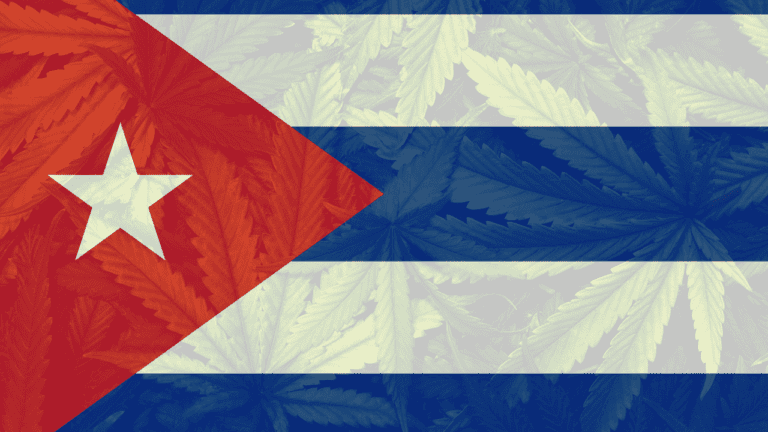Cannabis, a versatile and complex plant, has become increasingly popular across the globe for its recreational and medicinal properties. Understanding the anatomy of the cannabis plant is essential for both cultivators and enthusiasts who want to deepen their knowledge of this remarkable species. In this comprehensive guide, we’ll delve into the intricate structures and components of the cannabis plant, from the roots and stems to the trichomes and cannabinoids.

Roots and their Functions
The root system of the cannabis plant plays a crucial role in its overall health and vitality. The roots anchor the plant in the soil, absorb water and essential nutrients, and serve as a conduit for transporting these vital elements to the rest of the plant. There are two types of root structures in cannabis: taproots and lateral roots. The taproot is the primary, central root that grows vertically downward, while lateral roots branch out horizontally, forming a network of fibrous roots that efficiently absorb water and nutrients.
Stems and their Importance
Cannabis stems provide the necessary structural support for the plant and serve as the primary transportation network for water, nutrients, and sugars. stems consist of three primary components: the epidermis, which is the outer protective layer; the vascular bundles, responsible for the transportation of water and nutrients; and the pith, the central part of the stem that provides support and stores nutrients.
Leaves and their Role in Photosynthesis
The iconic cannabis leaf, with its distinct serrated edges and palmate structure, is a key component of the plant’s anatomy. Leaves are the primary site of photosynthesis, the process through which the plant converts sunlight, carbon dioxide, and water into sugars and oxygen. Cannabis leaves are composed of a variety of cells, including stomata, which regulate the exchange of gases, and chlorophyll-filled cells, which capture sunlight and facilitate the photosynthetic process.
Flowers: The Reproductive Organs
Cannabis plants are dioecious, meaning they have distinct male and female plants. The female plants produce flowers, also known as buds or colas, which contain high concentrations of cannabinoids and terpenes. Male plants, on the other hand, produce pollen sacs responsible for fertilizing the female flowers.
Female flowers are made up of pistils, which contain the reproductive organs, and calyxes, which protect the developing seeds. The pistils consist of two primary parts: the stigma, which captures pollen, and the ovule, where fertilization and seed development occur.
Trichomes: The Plant’s Natural Defense and Cannabinoid Factories
Trichomes are tiny, hair-like structures that cover the surface of cannabis flowers and leaves. They serve as the plant’s natural defense mechanism against pests and environmental stressors. Trichomes are also the primary site of cannabinoid and terpene production, making them essential for the plant’s psychoactive and therapeutic properties.
There are three types of trichomes found on the cannabis plant: bulbous, capitate-sessile, and capitate-stalked. The latter two are most important for cannabinoid production, with capitate-stalked trichomes being the largest and most abundant.

Cannabinoids: The Active Compounds in Cannabis
Cannabinoids are the chemical compounds responsible for the psychoactive and therapeutic effects of cannabis. Over 100 different cannabinoids have been identified in the cannabis plant, with the two most well-known being delta-9-tetrahydrocannabinol (THC) and cannabidiol (CBD). THC is the primary psychoactive compound, while CBD is non-psychoactive and has a range of potential therapeutic benefits.
Cannabinoids are produced within the trichomes through a biosynthetic process involving precursor molecules, such as cannabigerolic acid (CBGA). CBGA is the precursor to the three major cannabinoids: THC, CBD, and cannabichromene (CBC). Various enzymes in the plant convert CBGA into these cannabinoids, which are then stored in the trichomes until they are consumed or harvested.
Terpenes: The Aromatic Compounds in Cannabis
Terpenes are the aromatic compounds that give cannabis its distinct scent and flavor profiles. Over 200 different terpenes have been identified in the cannabis plant, with many also found in other plants and fruits. Terpenes play a significant role in the overall cannabis experience, as they can modulate the effects of cannabinoids and contribute to the entourage effect, a phenomenon where the combined effects of cannabinoids and terpenes are greater than their individual effects.
Like cannabinoids, terpenes are produced and stored within the trichomes. Some of the most common terpenes found in cannabis include myrcene, limonene, and pinene, each of which possesses unique aromas and potential therapeutic properties.
The Growth Phases of Cannabis
Cannabis plants undergo several growth phases during their life cycle, including the germination, vegetative, and flowering stages. During germination, the cannabis seed absorbs water and nutrients, and the taproot begins to emerge. The vegetative stage follows, during which the plant’s stems and leaves grow rapidly, maximizing photosynthetic capacity. Finally, the flowering stage occurs, when the plant focuses its energy on producing flowers, cannabinoids, and terpenes.
Understanding these growth phases and their associated changes in the plant’s anatomy is crucial for cultivators, as it allows them to optimize the growth environment and nutrient requirements to achieve the desired yield and cannabinoid profiles.
The anatomy of the cannabis plant is a complex and fascinating subject, with each component playing a vital role in the plant’s growth, survival, and chemical production. By understanding the intricacies of the cannabis plant, cultivators and enthusiasts can better appreciate the diverse effects and therapeutic potential this remarkable species has to offer. From the foundational roots and stems to the dynamic trichomes and cannabinoids, the cannabis plant’s anatomy is a true testament to the power and versatility of nature.
Common Misconceptions About Cannabis Plant Anatomy
As cannabis gains popularity around the world, so too does misinformation about its anatomy and cultivation. Misunderstandings about the cannabis plant’s structure, growth, and chemical composition can lead to confusion for both novice and experienced enthusiasts. In this blog, we’ll debunk some common misconceptions about cannabis plant anatomy and set the record straight on this fascinating plant.
Misconception: All Cannabis Plants Produce High Levels of THC
One common misconception is that all cannabis plants naturally produce high levels of THC, the primary psychoactive compound. In reality, there are various strains and subspecies of cannabis, each with unique cannabinoid profiles. While some strains are bred specifically for high THC content, others, such as industrial hemp and certain medicinal strains, have minimal THC levels and are rich in non-psychoactive compounds like CBD.
Misconception: Male Cannabis Plants are Useless
Many people believe that male cannabis plants are useless because they do not produce the coveted flowers or buds that contain cannabinoids and terpenes. While it’s true that female plants are prized for their flowers, male plants have important roles in cannabis cultivation. They are essential for breeding new strains, producing pollen for seed production, and creating hybrids with specific genetic traits. Additionally, male plants can be used for fiber production and as a source of pollen for bees and other pollinators.
Misconception: Cannabis Leaves Contain High Concentrations of THC and CBD
While cannabis leaves are iconic and easily recognizable, they do not contain high concentrations of THC or CBD. Most of the cannabinoids are produced and stored within the trichomes, tiny hair-like structures that cover the flowers and, to a lesser extent, the leaves. Although cannabis leaves do contain some cannabinoids and terpenes, the concentrations are significantly lower than in the flowers.
Misconception: All Cannabis Strains Smell the Same
The distinct aroma of cannabis is often attributed to a single scent, but the reality is much more diverse. The unique smell of each cannabis strain is primarily due to the presence of terpenes, aromatic compounds that are also found in many other plants and fruits. Different strains have varying terpene profiles, resulting in a wide range of scents from sweet and fruity to earthy and skunky. Understanding the role of terpenes in cannabis aromas can help users appreciate the plant’s complexity and enhance their overall experience.
Misconception: Cannabis Plants Require Constant Care and Attention
While cannabis plants do require specific conditions to thrive, they are not as high-maintenance as some people might think. In fact, cannabis is a resilient and adaptable plant that can grow in a variety of environments, from indoor hydroponic systems to outdoor gardens. By understanding the plant’s basic needs, such as appropriate lighting, temperature, and nutrient levels, cultivators can successfully grow healthy, productive cannabis plants with minimal fuss.
Misconceptions about cannabis plant anatomy are prevalent, but by debunking these misunderstandings, we can foster a better appreciation for the plant’s complexity and versatility. As interest in cannabis cultivation and consumption continues to grow, it’s important to stay informed about the plant’s true nature and share accurate information with others. With a better understanding of cannabis plant anatomy, users and cultivators alike can enjoy the many benefits this remarkable species has to offer.








